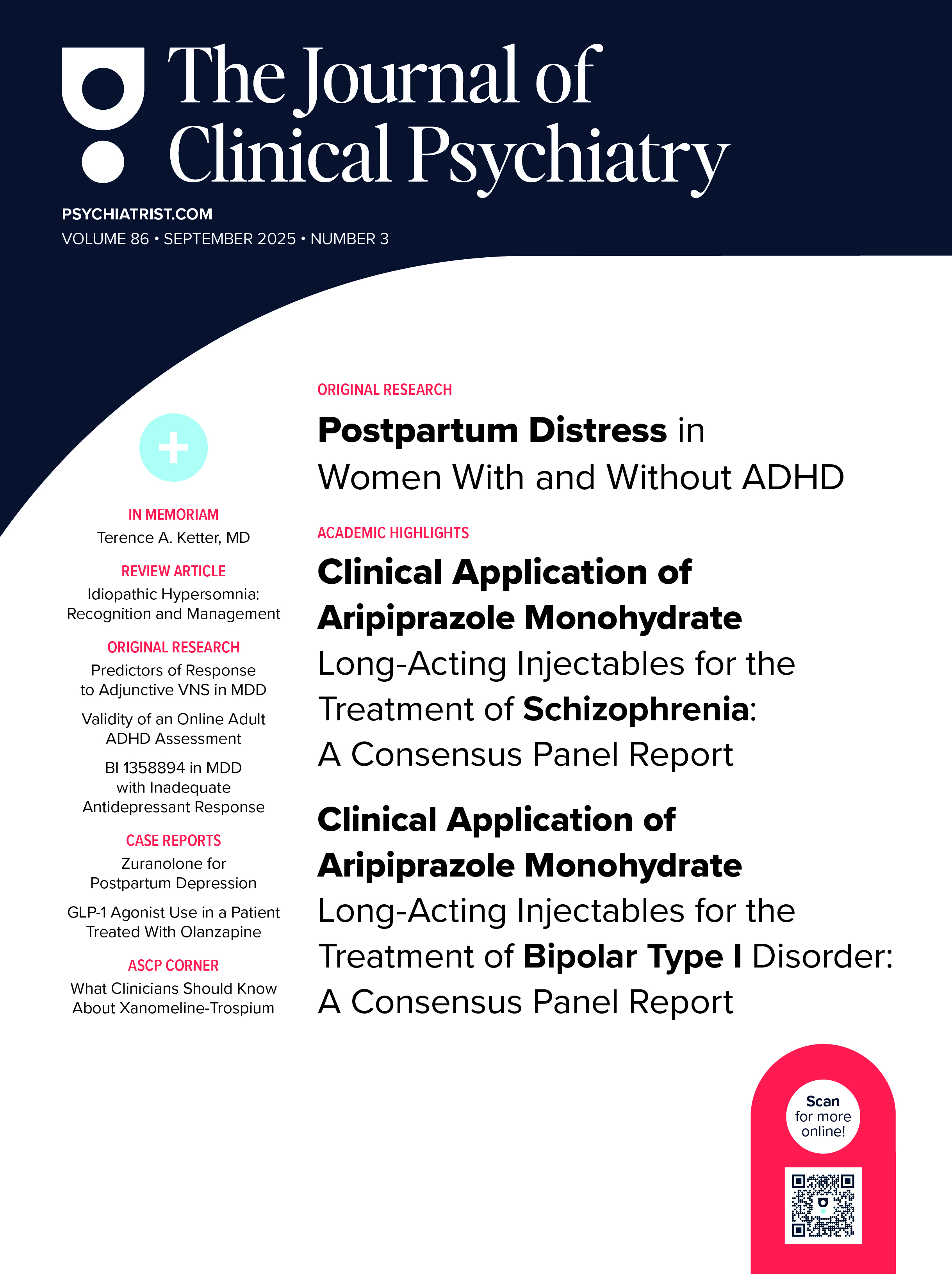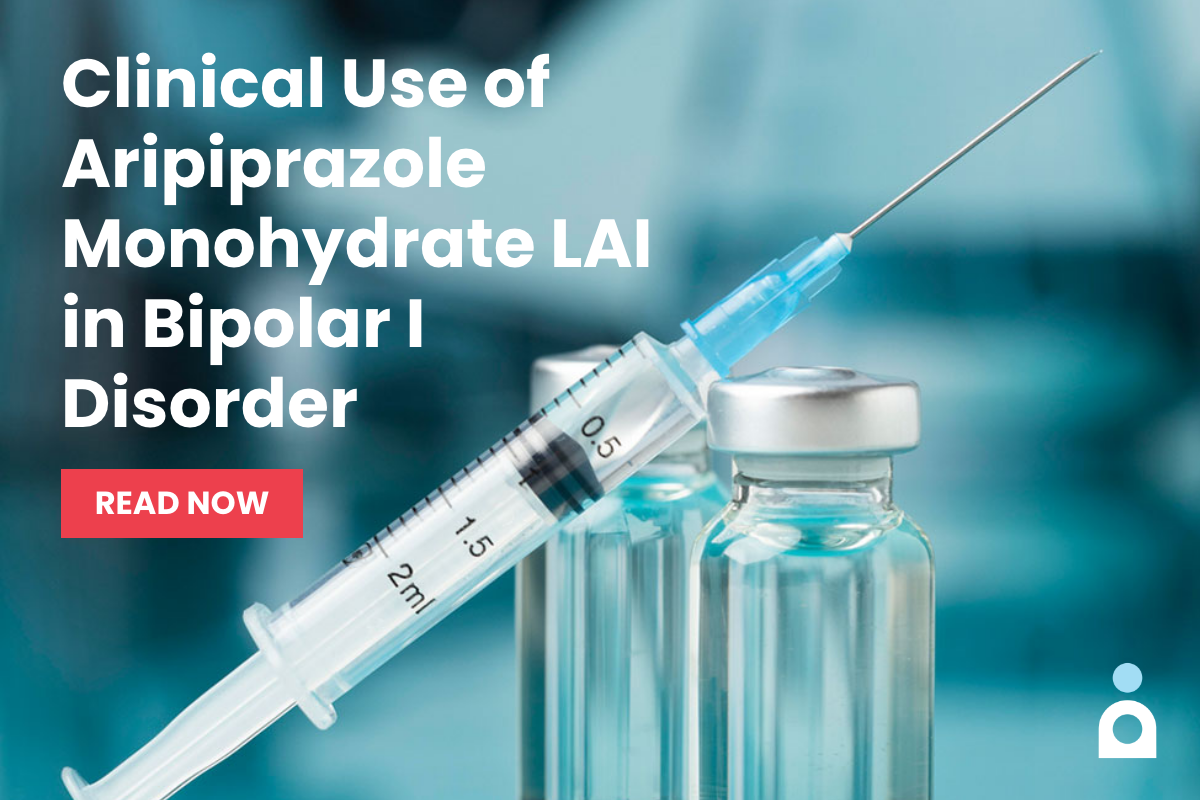ABSTRACT
Objective: Clinical interventions targeting co-occurring psychiatric disorders may represent a tangible target for improving retention in buprenorphine treatment for opioid use disorder. The aims of this study are to characterize receipt of antidepressants among patients receiving buprenorphine treatment and to examine the association between receiving antidepressants and retention in treatment.
Methods: A retrospective cohort design was used. Using data from a large national commercially insured population, the cohort was selected as adults aged 18 to 64 years who initiated buprenorphine treatment in outpatient settings between January 1, 2016, and June 30, 2017. Receiving antidepressants was identified as prescription fills in the period between 6 months prior to buprenorphine initiation and during buprenorphine treatment. Buprenorphine discontinuation was defined as no buprenorphine prescription supply for at least 60 days following the end of the last buprenorphine prescription.
Results: The cohort consisted of 11,619 individuals who initiated buprenorphine treatment and met our inclusion criteria. The cohort had a mean age of 36.3 years, 63% were male, and 55.7% received at least 1 antidepressant prescription at any time between 6 months prior to buprenorphine initiation and during treatment. Compared with those receiving no antidepressants at all, individuals starting antidepressants during buprenorphine treatment had an adjusted hazard ratio (HR) for treatment discontinuation of 0.72 (95% CI = 0.67–0.77), while receiving antidepressants only prior to buprenorphine initiation was associated with an increased risk of treatment discontinuation (HR = 1.40, 95% CI = 1.28–1.53).
Conclusions: Findings suggest that receiving antidepressants during buprenorphine treatment is associated with improved retention. This highlights the critical importance of screening for and treating mental disorders concomitantly with treatment of opioid use disorder.
Members Only Content
This full article is available exclusively to Professional tier members. Subscribe now to unlock the HTML version and gain unlimited access to our entire library plus all PDFs. If you’re already a subscriber, please log in below to continue reading.
References (39)

- Ahmad FB, Rossen LM, Sutton P. Provisional drug overdose death counts. Centers for Disease Control and Prevention. 2020. https://www.cdc.gov/nchs/nvss/vsrr/prhttps://www.cdc.gov/nchs/nvss/vsrr/provisional-drug-overdose.htm
- Liu S, Scholl L, Hoots B, et al. Nonfatal drug and polydrug overdoses treated in emergency departments—29 States, 2018–2019. MMWR Morb Mortal Wkly Rep. 2020;69(34):1149–1155. PubMed CrossRef
- Strategy to Combat Opioid Abuse, Misuse, and Overdose-A Framework Based on the Five Point Strategy. US Department of Health and Human Services. 2018. Accessed May 15, 2020. https://www.hhs.gov/opioids/sites/default/files/2018-09/opioid-fivepoint-strategy-20180917-508compliant.pdf
- National Academies of Sciences, Engineering, and Medicine. Medications for Opioid Use Disorder Save Lives. The National Academies Press; 2019. https://doi.org/10.17226/25310.
- Mattick RP, Breen C, Kimber J, et al. Buprenorphine maintenance versus placebo or methadone maintenance for opioid dependence. Cochrane Database Syst Rev. 2014;2(2):CD002207. PubMed CrossRef
- Krawczyk N, Mojtabai R, Stuart EA, et al. Opioid agonist treatment and fatal overdose risk in a state-wide US population receiving opioid use disorder services. Addiction. 2020;115(9):1683–1694. PubMed CrossRef
- Tsui JI, Evans JL, Lum PJ, et al. Association of opioid agonist therapy with lower incidence of hepatitis C virus infection in young adult injection drug users. JAMA Intern Med. 2014;174(12):1974–1981. PubMed CrossRef
- Barocas JA, Gai MJ, Amuchi B, et al. Impact of medications for opioid use disorder among persons hospitalized for drug use-associated skin and soft tissue infections. Drug Alcohol Depend. 2020;215:108207. PubMed CrossRef
- Andrilla CHA, Coulthard C, Larson EH. Barriers rural physicians face prescribing buprenorphine for opioid use disorder. Ann Fam Med. 2017;15(4):359–362. PubMed CrossRef
- Beetham T, Saloner B, Wakeman SE, et al. Access to office-based buprenorphine treatment in areas with high rates of opioid-related mortality: an audit study. Ann Intern Med. 2019;171(1):1–9. PubMed CrossRef
- Jones CM, McCance-Katz EF. Characteristics and prescribing practices of clinicians recently waivered to prescribe buprenorphine for the treatment of opioid use disorder. Addiction. 2019;114(3):471–482. PubMed CrossRef
- Beetham T, Saloner B, Gaye M, et al. Therapies offered at residential addiction treatment programs in the United States. JAMA. 2020;324(8):804–806. PubMed CrossRef
- ASAM National Practice Guideline for the Treatment of Opioid Use Disorder: 2020 Focused Update. American Society of Addiction Medicine. 2020. https://www.asam.org/Quality-Science/quality/2020-national-practice-guideline
- Eastwood B, Strang J, Marsden J. Effectiveness of treatment for opioid use disorder: A national, five-year, prospective, observational study in England. Drug Alcohol Depend. 2017;176:139–147. PubMed CrossRef
- Timko C, Schultz NR, Cucciare MA, et al. Retention in medication-assisted treatment for opiate dependence: A systematic review. J Addict Dis. 2016;35(1):22–35. PubMed CrossRef
- Volkow ND, Frieden TR, Hyde PS, et al. Medication-assisted therapies: tackling the opioid-overdose epidemic. N Engl J Med. 2014;370(22):2063–2066. PubMed CrossRef
- Samples H, Williams AR, Crystal S, et al. Impact of long-term buprenorphine treatment on adverse health care outcomes in Medicaid. Health Aff (Millwood). 2020;39(5):747–755. PubMed CrossRef
- Williams AR, Samples H, Crystal S, et al. Acute care, prescription opioid use, and overdose following discontinuation of long-term buprenorphine treatment for opioid use disorder. Am J Psychiatry. 2020;177(2):117–124. PubMed CrossRef
- Parran TV, Adelman CA, Merkin B, et al. Long-term outcomes of office-based buprenorphine/naloxone maintenance therapy. Drug Alcohol Depend. 2010;106(1):56–60. PubMed CrossRef
- Daley DC. Family and social aspects of substance use disorders and treatment. Yao Wu Shi Pin Fen Xi. 2013;21(4):S73–S76. PubMed CrossRef
- Barry CL, McGinty EE, Pescosolido BA, et al. Stigma, discrimination, treatment effectiveness, and policy: public views about drug addiction and mental illness. Psychiatr Serv. 2014;65(10):1269–1272. PubMed CrossRef
- Levin FR, Bisaga A, Sullivan MA, et al. A review of a national training initiative to increase provider use of MAT to address the opioid epidemic. Am J Addict. 2016;25(8):603–609. PubMed CrossRef
- Manhapra A, Agbese E, Leslie DL, et al. Three‐year retention in buprenorphine treatment for opioid use disorder among privately insured adults. Psychiatr Serv. 2018;69(7):768–776. PubMed CrossRef
- Goldner EM, Lusted A, Roerecke M, et al. Prevalence of Axis-1 psychiatric disorder and symptomatology among non-medical prescription opioid users in substance use treatment: systematic review and meta-analyses. Addict Behav. 2014;39(3):520–531. PubMed CrossRef
- Han B, Compton WM, Blanco C, et al. Prescription opioid use, misuse, and use disorders in US adults: 2015 National Survey on Drug Use and Health. Ann Intern Med. 2017;167(5):293–301. PubMed CrossRef
- Hasin D, Liu X, Nunes E, et al. Effects of major depression on remission and relapse of substance dependence. Arch Gen Psychiatry. 2002;59(4):375–380. PubMed CrossRef
- Nunes EV, Sullivan MA, Levin FR. Treatment of depression in patients with opiate dependence. Biol Psychiatry. 2004;56(10):793–802. PubMed CrossRef
- Volkow ND, Jones EB, Einstein EB, et al. Prevention and treatment of opioid misuse and addiction: a review. JAMA Psychiatry. 2019;76(2):208–216. PubMed CrossRef
- Woody GE, O’Brien CP, McLellan AT, et al. The use of antidepressants with methadone in depressed maintenance patients. Ann N Y Acad Sci. 1982;398:120–127. PubMed CrossRef
- Agbese E, Leslie DL, Manhapra A, et al. Early discontinuation of buprenorphine therapy for opioid use disorder among privately insured adults. Psychiatr Serv. 2020;71(8):779–788. PubMed CrossRef
- Bunavail (buprenorphine and naloxone). Package insert. BioDelivery Sciences International, Inc. US Food and Drug Administration website. https://www.accessdata.fda.gov/drugsatfda_docs/label/2019/205637s020lbl.pdf#page=31. Revised October 2019. Accessed May 20, 2020.
- Suboxone (buprenorphine and naloxone). Package insert. Indivior Inc. US Food and Drug Administration website. https://www.accessdata.fda.gov/drugsatfda_docs/label/2019/022410s038lbl.pdf#page=32. Revised October 2019. Accessed May 20, 2020.
- Zubsolv (buprenorphine and naloxone). Package insert. Orexo US, Inc. US Food and Drug Administration website. Revised October 2019. Accessed May 20, 2020. https://www.accessdata.fda.gov/drugsatfda_docs/label/2019/204242s017lbl.pdf#page=18.
- Morgan JR, Schackman BR, Leff JA, et al. Injectable naltrexone, oral naltrexone, and buprenorphine utilization and discontinuation among individuals treated for opioid use disorder in a United States commercially insured population. J Subst Abuse Treat. 2018;85:90–96. PubMed CrossRef
- Samples H, Williams AR, Olfson M, et al. Risk factors for discontinuation of buprenorphine treatment for opioid use disorders in a multi-state sample of Medicaid enrollees. J Subst Abuse Treat. 2018;95:9–17. PubMed CrossRef
- Jones CM, McCance-Katz EF. Co-occurring substance use and mental disorders among adults with opioid use disorder. Drug Alcohol Depend. 2019;197:78–82. PubMed CrossRef
- Friesen EL, Kurdyak P. The impact of psychiatric comorbidity on treatment discontinuation among individuals receiving medications for opioid use disorder. Drug Alcohol Depend. 2020;216(1):108244. PubMed CrossRef
- Griffin ML, Dodd DR, Potter JS, et al. Baseline characteristics and treatment outcomes in prescription opioid dependent patients with and without co-occurring psychiatric disorder. Am J Drug Alcohol Abuse. 2014;40(2):157–162. PubMed CrossRef
- Substance Abuse and Mental Health Services Administration. Projections of National Expenditures for Treatment of Mental and Substance Use Disorders, 2010–2020. 2014. HHS Publication No SMA-14-4883. Accessed July 2021. https://store.samhsa.gov/sites/default/files/d7/priv/sma14-4883.pdf




